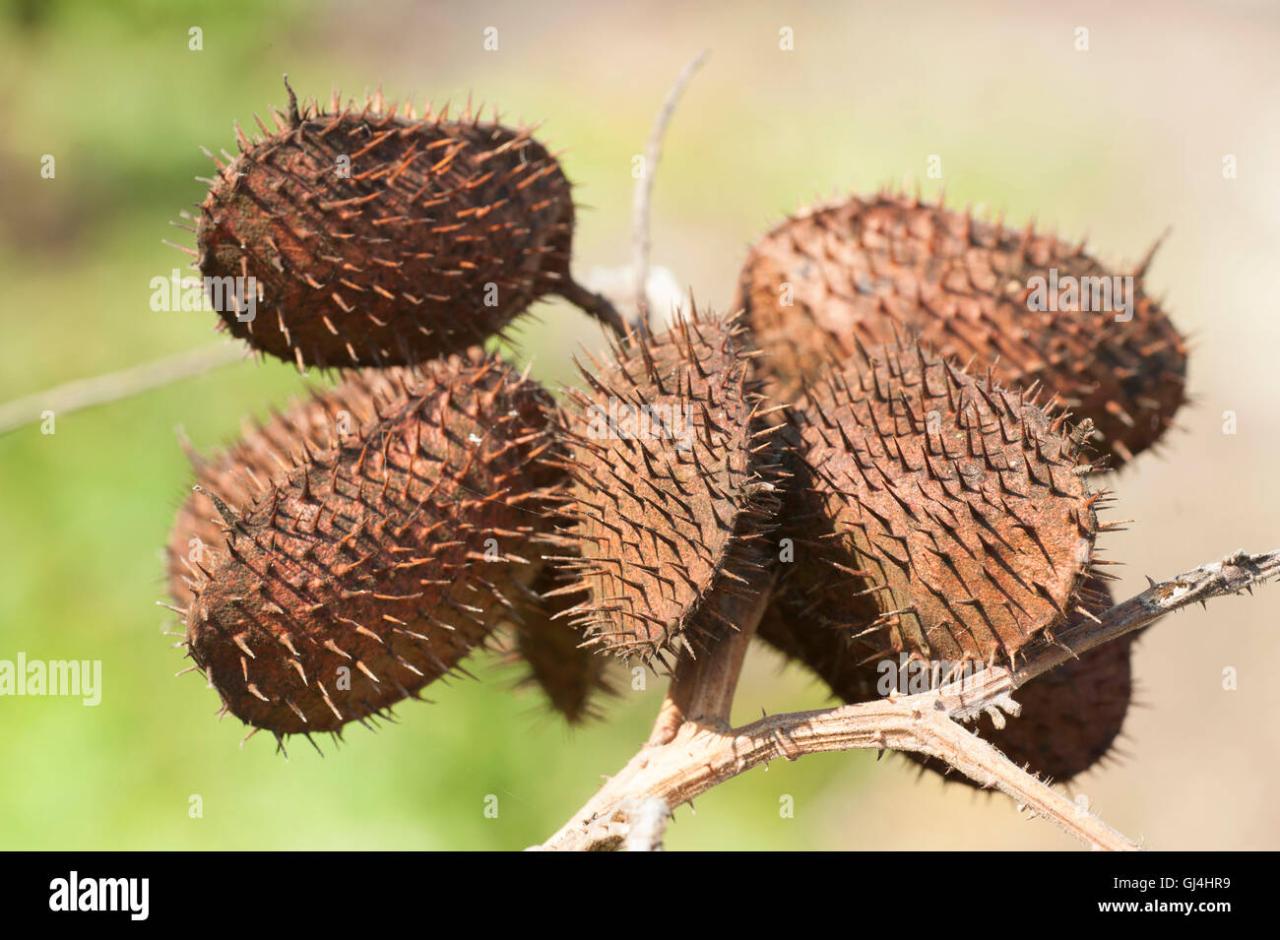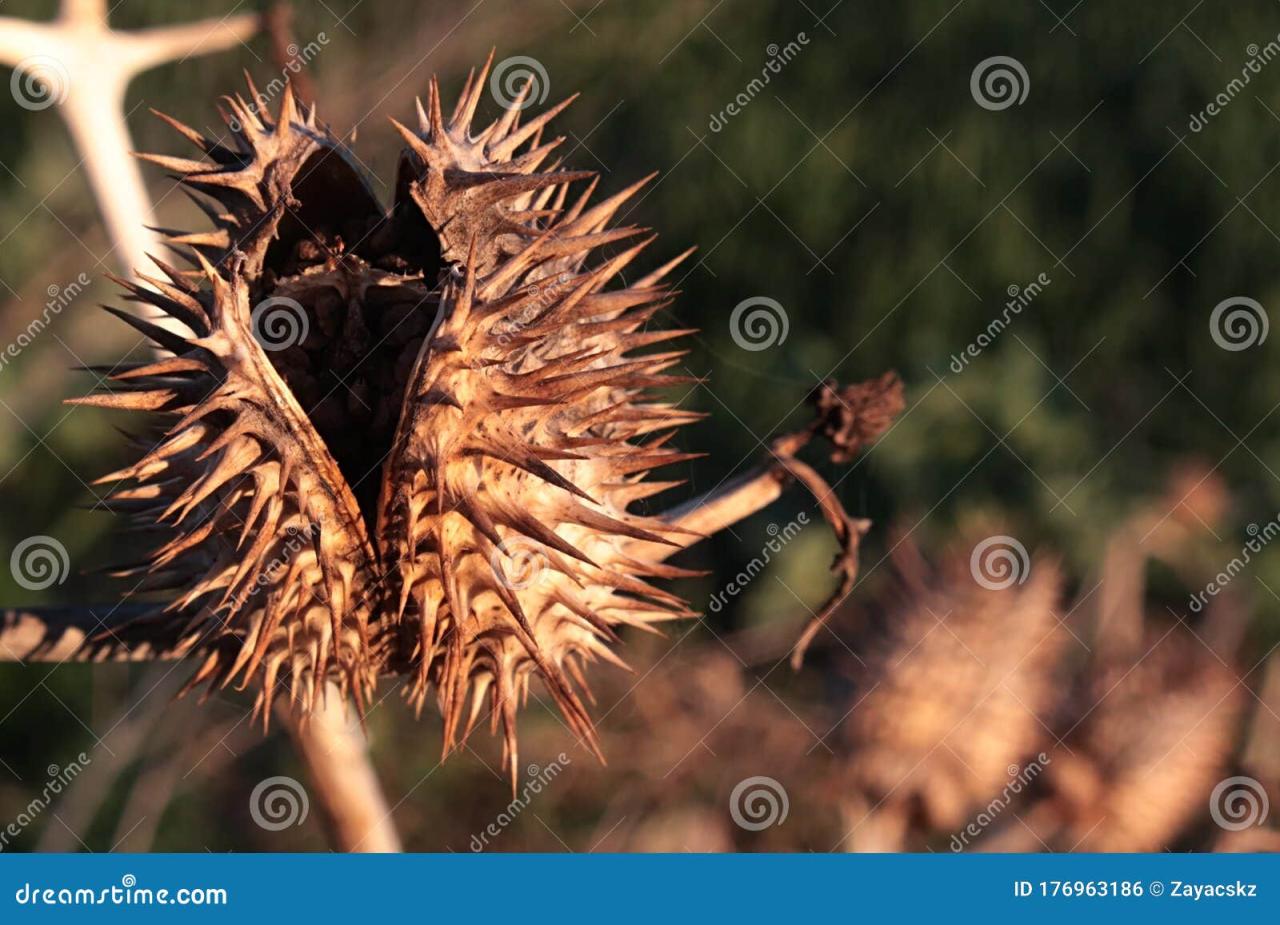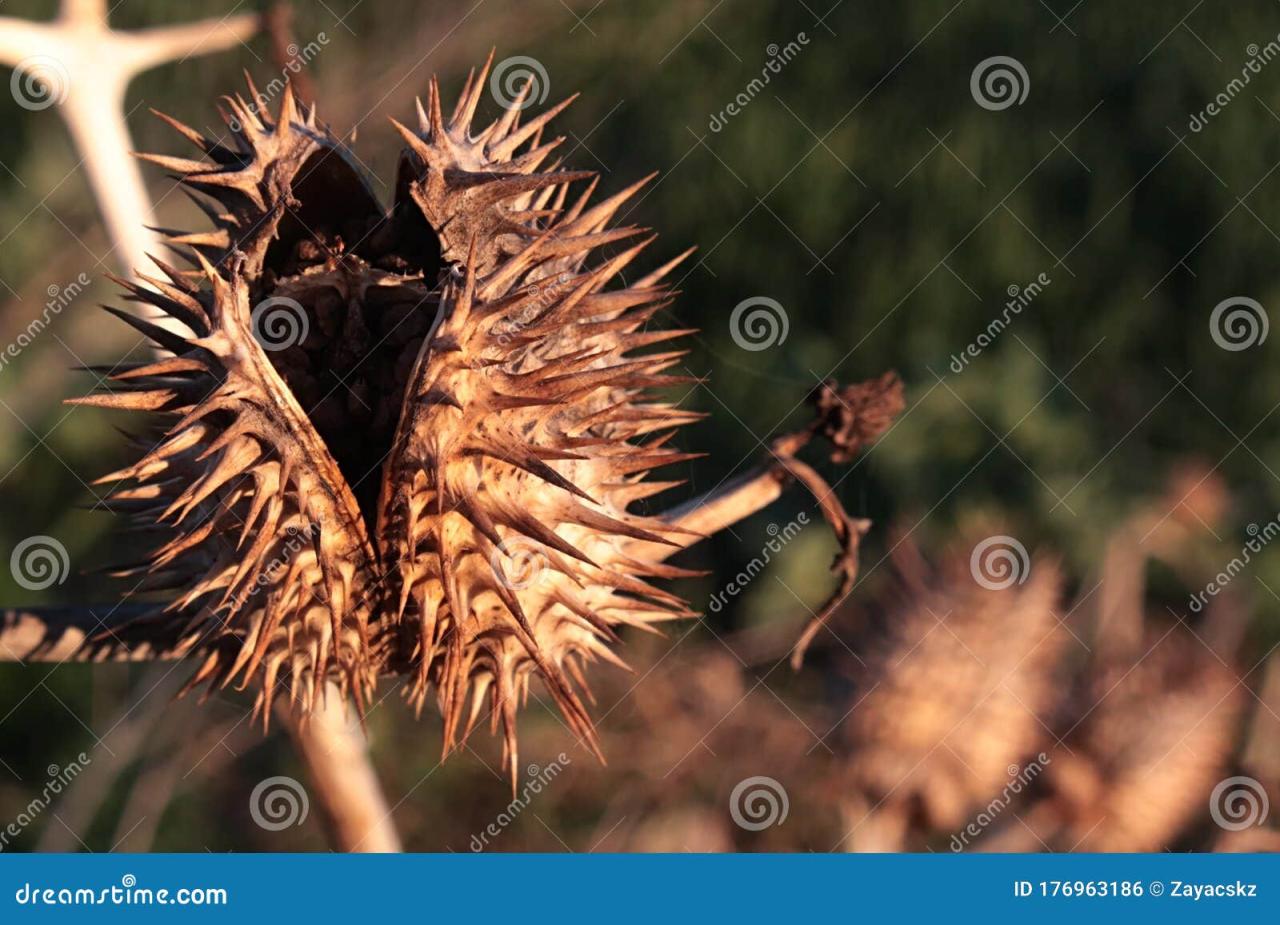How Spiky Seeds Can Help Save Endangered Plant Species – our planet faces a devastating plant extinction crisis, threatening the delicate balance of ecosystems. Seed dispersal, a vital process for plant survival, often relies on intricate relationships with animals.
Spiky seeds, with their unique ability to hitch a ride on unsuspecting creatures, play a crucial role in this natural dance of life and survival.
These prickly marvels have evolved ingenious mechanisms to attach themselves to fur, feathers, and even clothing, ensuring their journey to new territories. As animals move, they inadvertently carry these seeds, spreading them far and wide, helping plants colonize new habitats and maintain genetic diversity.
This seemingly simple act of seed dispersal holds immense potential for safeguarding endangered plant species, offering a lifeline in the face of habitat loss and climate change.
Introduction

The world is facing a plant extinction crisis, with an alarming rate of species disappearing. This loss of biodiversity has significant consequences for ecosystems and human well-being. Plant extinction not only diminishes the beauty and diversity of our planet but also threatens the services plants provide, such as food, medicine, and oxygen.One of the key factors contributing to plant extinction is the disruption of seed dispersal, a crucial process for plant survival and reproduction.
The ability to propagate plants quickly and efficiently is crucial for conservation efforts, especially when dealing with endangered species. While spiky seeds might seem like an obstacle, they often hold the key to successful propagation. This is particularly true for African violets, which can be easily propagated using leaf cuttings, as detailed in the informative article Unlock the Magic of African Violet Propagation in Just Days.
By mastering these techniques, we can ensure the continued survival of these delicate and beautiful plants, just as we can harness the unique properties of spiky seeds to safeguard other endangered species.
Seed dispersal ensures that seeds are transported away from the parent plant, reducing competition for resources and increasing the chances of successful germination and establishment in new areas.
Spiky Seeds and their Role in Dispersal
Spiky seeds, also known as burrs, are a fascinating example of how plants have evolved to overcome dispersal challenges. These seeds have sharp, hooked structures that attach themselves to animals, such as mammals and birds, facilitating their transport to distant locations.
This mechanism, known as epizoochory, plays a vital role in the survival of many plant species.
How Spiky Seeds Facilitate Dispersal
Spiky seeds, also known as burrs or hitchhikers, have evolved a unique dispersal strategy that relies on animals for transportation. Their spiky exterior allows them to attach to animal fur, feathers, or clothing, effectively hitching a ride to new locations.
This method of dispersal, known as epizoochory, is crucial for the survival and spread of many plant species, particularly those facing threats like habitat loss and fragmentation.
Mechanisms of Attachment
The spiky exterior of these seeds plays a crucial role in their dispersal. Their sharp barbs, hooks, or spines are designed to catch onto animal fur or clothing, ensuring a secure grip.
- Hooked barbs:These seeds, like those of the common burdock ( Arctium lappa), possess hooked barbs that readily catch onto animal fur. The hooks are often arranged in a radial pattern, maximizing their chances of snagging.
- Spines:Some seeds, such as those of the cocklebur ( Xanthium strumarium), have sharp spines that pierce into animal fur or clothing. The spines can be rigid or flexible, allowing them to adapt to different textures.
- Sticky glands:Certain seeds, like those of the mistletoe ( Viscum album), have sticky glands that allow them to adhere to animal fur or feathers. The glands secrete a sticky substance that provides a strong hold.
Examples of Spiky Seeds and Their Animal Vectors
The effectiveness of spiky seed dispersal is evident in the diverse range of plant species that rely on this strategy.
- Burdock (Arctium lappa): Burdock seeds have hooked barbs that readily attach to animal fur, particularly the fur of larger mammals like dogs, horses, and deer. These animals can then carry the seeds over long distances, aiding in the plant’s dispersal.
- Cocklebur (Xanthium strumarium): Cocklebur seeds possess sharp spines that can pierce into animal fur or clothing. They are commonly dispersed by mammals like rabbits, squirrels, and even humans.
- Mistletoe (Viscum album): Mistletoe seeds have sticky glands that allow them to adhere to bird feathers. Birds, particularly thrushes, are known to carry these seeds on their feathers, facilitating their dispersal to new host trees.
Advantages of Spiky Seed Dispersal
Spiky seed dispersal offers several advantages for plants, contributing to their survival and spread:
- Increased dispersal distance:Animals can carry seeds over long distances, effectively moving them beyond the parent plant’s immediate vicinity. This reduces competition for resources and allows plants to colonize new areas.
- Access to suitable habitats:Animals can transport seeds to diverse habitats, including areas that might be inaccessible to the parent plant. This increases the chances of finding suitable conditions for germination and growth.
- Escape from predators:Spiky seeds can escape predation by herbivores, as their sharp barbs and spines make them difficult to consume. This ensures that some seeds survive to germinate and establish new plants.
The Role of Spiky Seeds in Endangered Plant Conservation
Spiky seeds, with their unique dispersal mechanisms, play a crucial role in the conservation of endangered plant species. Their ability to hitchhike on animals or become embedded in soil allows for efficient seed dispersal, a vital process for maintaining genetic diversity and establishing new populations.
This section delves into the ways spiky seeds can be leveraged for the reintroduction and restoration of endangered plants.
The Use of Spiky Seeds for Reintroduction of Endangered Plant Species
The reintroduction of endangered plant species into their natural habitats is a key strategy for their conservation. Spiky seeds can facilitate this process by increasing the success rate of reintroduction efforts. Their ability to attach to animal fur or clothing allows for efficient and widespread seed dispersal, overcoming challenges like limited seed availability and the need for manual planting.
Spiky seeds can increase the success rate of reintroduction efforts by facilitating widespread seed dispersal.
Spiky Seeds for Habitat Restoration
Habitat restoration is a critical aspect of plant conservation, aiming to restore degraded ecosystems to their original state. Spiky seeds can contribute significantly to this process by promoting natural regeneration. Their ability to disperse effectively allows them to reach suitable habitats and establish new populations, accelerating the restoration process.
Understanding how to propagate plants is crucial for conservation efforts, especially when dealing with endangered species. Techniques like using spiky seeds to encourage germination can be vital in ensuring the survival of these vulnerable plants. Similarly, understanding the best methods for propagating common houseplants, such as African Violets, can be a stepping stone to mastering more complex propagation techniques.
For example, the The Right Way to Propagate African Violets in Water article provides a clear guide on how to start new plants from cuttings, which is a technique that can be adapted for various other plant species. By learning about these propagation methods, we can contribute to the preservation of both our beloved houseplants and the world’s endangered flora.
Spiky seeds can promote natural regeneration in habitat restoration efforts, accelerating the process of ecosystem recovery.
Examples of Endangered Plant Species with Spiky Seeds, How Spiky Seeds Can Help Save Endangered Plant Species
Several endangered plant species rely on spiky seeds for dispersal, highlighting their importance in plant conservation. These include:
- Hooked Sedge (Carex echinata): This sedge species, found in wetlands, has spiky seeds that attach to the feathers of birds, facilitating long-distance dispersal.
- Sticky Catchfly (Silene viscaria): This wildflower, native to Europe, produces seeds with sticky hairs that cling to animal fur, promoting dispersal to new locations.
- Burdock (Arctium lappa): The spiky seeds of this plant, known for their use in traditional medicine, attach to animal fur and clothing, contributing to their dispersal.
Challenges and Opportunities
While spiky seeds offer a promising strategy for endangered plant conservation, several challenges must be addressed to ensure their effectiveness. These challenges stem from the complex interplay between seed dispersal mechanisms, habitat fragmentation, and the unique requirements of each endangered species.
Challenges in Utilizing Spiky Seeds for Endangered Plant Conservation
The use of spiky seeds for endangered plant conservation faces several challenges:
- Limited understanding of dispersal mechanisms:While the spiky seed dispersal strategy is well-established for some species, much remains unknown about the specific dispersal vectors, distances, and environmental factors influencing seed dispersal for many endangered plants.
- Habitat fragmentation and connectivity:Habitat fragmentation, a significant threat to endangered species, can disrupt natural dispersal patterns. Spiky seeds may not effectively disperse across fragmented landscapes, limiting their ability to establish new populations.
- Competition and predation:Spiky seeds may face competition from other plant species or be vulnerable to predation by animals. These factors can reduce the success rate of spiky seeds establishing new populations.
- Species-specific requirements:Different endangered plants have varying dispersal needs, germination requirements, and survival strategies. The effectiveness of spiky seed dispersal may vary greatly depending on the specific species.
Strategies for Overcoming Challenges
To overcome these challenges, researchers and conservationists are exploring various strategies:
- Enhanced understanding of dispersal mechanisms:Conducting detailed studies on the dispersal ecology of endangered plant species with spiky seeds is crucial. This includes identifying dispersal vectors, dispersal distances, and the environmental factors influencing dispersal success.
- Habitat restoration and connectivity:Restoring fragmented habitats and establishing corridors between populations can facilitate seed dispersal and improve the connectivity of endangered plant populations.
- Seed augmentation and assisted dispersal:In some cases, conservationists may need to augment seed populations or assist in seed dispersal. This can involve collecting seeds from existing populations and introducing them to suitable habitats or using techniques like seed banking to preserve genetic diversity.
- Species-specific approaches:Tailoring conservation strategies to the specific requirements of each endangered plant species is essential. This may involve developing specialized seed dispersal techniques, adapting habitat management practices, or implementing targeted conservation efforts.
Successful Conservation Efforts
Despite the challenges, there have been successful conservation efforts involving spiky seeds:
- The restoration of the endangered-Astragalus lentiginosus* in California: Researchers have successfully used spiky seeds to restore populations of this endangered plant species. They studied the dispersal mechanisms and identified suitable habitat for reintroduction, resulting in the establishment of new populations.
- The conservation of the-Centaurea solstitialis* in Europe: This invasive plant species, with its spiky seeds, has been effectively controlled using a combination of mechanical removal and seed dispersal management techniques. This example demonstrates the potential of understanding spiky seed dispersal for managing invasive species.
Conclusion

The spiky seeds of numerous plant species serve as a remarkable adaptation for dispersal, enabling them to colonize new territories and ensure their survival. These seeds, armed with their unique structures, leverage various dispersal vectors like wind, water, and animals, effectively expanding their reach and promoting genetic diversity.
The Significance of Spiky Seeds in Conservation
The role of spiky seeds in conservation efforts is multifaceted. These seeds play a vital role in the survival of endangered plant species by facilitating their dispersal, particularly in fragmented landscapes where natural dispersal mechanisms are disrupted. Spiky seeds contribute to the establishment of new populations, bolstering genetic diversity and increasing the resilience of endangered species against environmental challenges.
The Future of Spiky Seed Research
Further research into the intricacies of spiky seed dispersal mechanisms is crucial for advancing conservation strategies. Understanding the factors influencing dispersal success, such as seed morphology, environmental conditions, and animal behavior, will enable the development of targeted conservation interventions.
Closing Notes: How Spiky Seeds Can Help Save Endangered Plant Species
The story of spiky seeds is a testament to the power of nature’s ingenuity and the intricate web of life that sustains our planet. By understanding and harnessing the remarkable dispersal capabilities of these prickly marvels, we can pave the way for a brighter future for endangered plant species.
Further research into the fascinating world of spiky seeds promises to unlock even more secrets and reveal novel approaches to conservation, ensuring the survival of our planet’s botanical treasures for generations to come.
Questions and Answers
What are the benefits of spiky seed dispersal for plants?
Spiky seeds offer plants several advantages, including: increased genetic diversity, colonization of new habitats, and reduced competition with parent plants.
How can spiky seeds be used for habitat restoration?
By strategically introducing spiky seeds to degraded areas, we can encourage the re-establishment of native plant communities, fostering biodiversity and ecological resilience.
What are some examples of endangered plant species that rely on spiky seed dispersal?
Several endangered plant species, including the California poppy and the Hawaiian silversword, rely on spiky seeds for dispersal. These species face threats from habitat loss and invasive species, making seed dispersal crucial for their survival.
